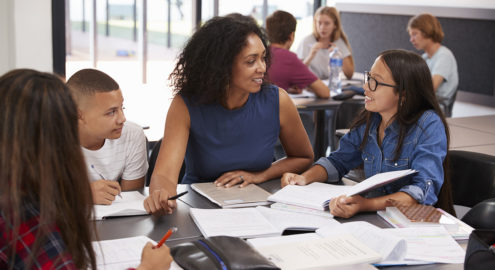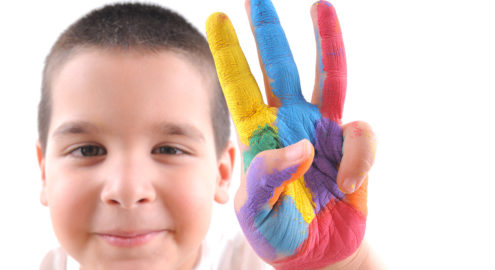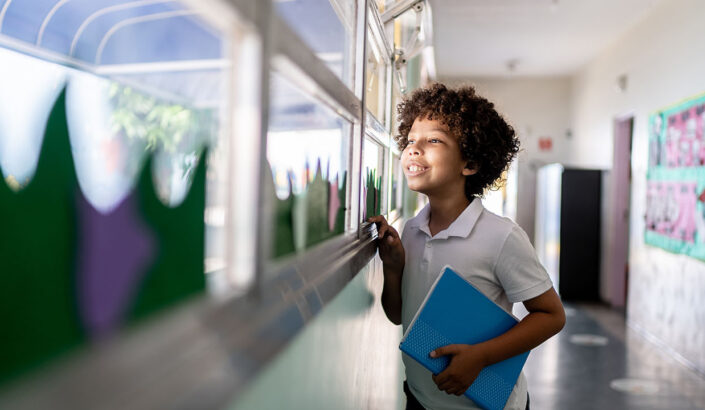What Is It?
Hope involves a wish for something, the belief it will come true, and the trust that you have the capabilities to help achieve the wish.
Hope exists in two forms: as a natural, optimistic disposition and as a goal-driven choice. Some students are naturally hopeful, not needing much encouragement towards their goals, while others might need more support tapping into hope in order to persist towards their goals alongside feelings of frustration, challenge, stress, and even grief.
Researchers define hope through agency thinking and pathway thinking—a will and a way. Hopeful students act with intention and confidence, navigate obstacles, and seek alternative solutions to meet their goals when needed. With strategies and options, they can more easily keep moving forward…hope grows out of pragmatism, commitment, and action.
A student who is struggling with math shows agency thinking by believing in their ability to improve and pathway thinking by seeking alternative strategies, such as tutoring or YouTube videos that explain math concepts.
Children’s hopeful tendencies emerge early in life, influenced by their relationships with parents or caregivers. When babies’ needs—such as hunger, safety, and affection—are met, the foundation for hope is formed.
Hope can also be nurtured as children grow—alongside the development of some supportive skills and beliefs such as self-awareness, self-efficacy, and optimism. Indeed, students who have a strong sense of confidence in their abilities, or self-efficacy, have an easier time bolstering their hope with trust that they can contribute to achieving their goals.
The values, beliefs, and experiences shaped by students’ cultures and backgrounds also influence what they hope for, how they hope, and the actions they take to turn their hopes into reality. Some students from historically marginalized communities often face significantly different barriers when it comes to achieving their goals, due to systemic inequalities, which can impact their feelings of hope.
A student from a low-income, marginalized community, hopes to become a doctor but faces barriers like limited financial resources, which impact his sense of hope. His cultural values and family’s belief in education drive him, but systemic inequalities require extra support to help him overcome these obstacles.
Education doesn’t automatically instill hope in young people. It can be vulnerable to bias, inaccessibility, and lack of safety, which can easily undermine students’ hope in their futures.
A student in a low- to middle-income country may struggle to maintain hope for her future, as corruption within and outside the education system limits her job opportunities, despite her efforts in school, and even hinders her ability to complete her education.
However, schools have the opportunity to empower students—helping them discover their goals, encouraging them to pursue them with confidence, and inspiring them to keep hope alive, no matter the obstacles they face.
Why Is It Important?
Hope can improve students’ mental health and well-being.
- Feeling a sense of hope can help reduce stress, feelings of anxiety, and burnout (“exhaustion, cynicism toward school, and feelings of inadequacy”), especially for high school students.
Hope increases students’ sense of belonging and connection with others.
- Students with higher levels of hope often report feeling more supported by their peers and teachers. This may be partly due to their more positive demeanor, which attracts friendships and fosters positive interactions with others.
Hope helps students believe in themselves, including academically.
- Self-efficacy—or the belief and confidence in one’s abilities—is an important component of hope itself, but it is also boosted when students are hopeful.
- Hope predicts academic self-efficacy—students’ belief and confidence in their school abilities—even beyond the effects of growth mindset and school belonging.
Hope bolsters self-regulation and problem-solving skills.
- Hope is closely linked to adolescents’ ability to organize, plan, and problem solve, empowering them to navigate challenges with confidence and determination.
Hope improves school engagement and performance.
- The boost in self-efficacy, confidence, and problem-solving skills that hope provides helps explain why hope has such a positive impact on students’ school engagement and performance.
Practices

A Hopeful Plan

A Hopeful Legacy

Awe-Inspiring Affirmations

Seeing the Positive Side of Things

Mindset Boosting Messages for Math

Three Good Things for Students

Discovering Your Strengths and Talents

Magic Wand

Best Possible Self

Create a Purpose Tattoo

Setting Long-Term Goals

Do you want to dive deeper into the science behind our GGIE practices? Enroll in one of our online courses for educators!


